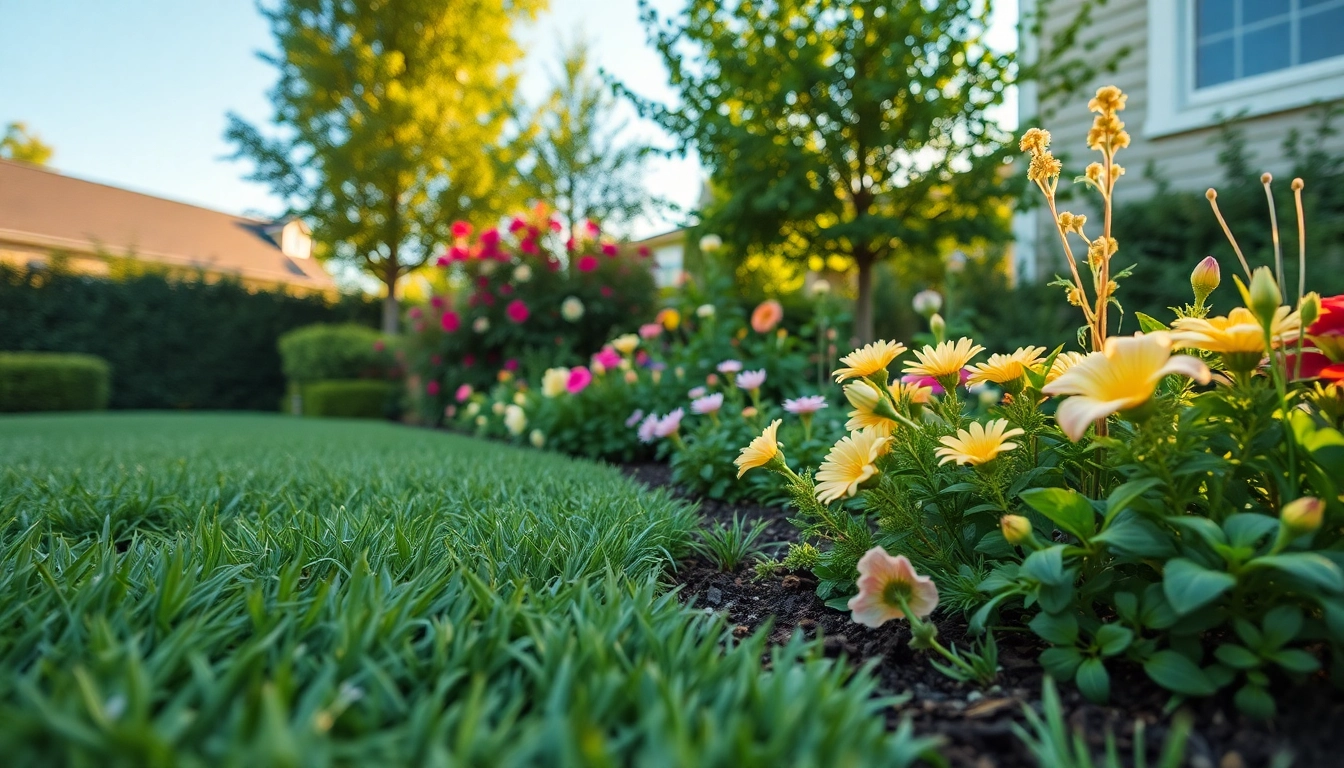
Understanding Landscaping Company Pricing: Factors That Influence Your Costs
Introduction to Landscaping Company Pricing
When it comes to landscaping, understanding pricing can feel like navigating a complex labyrinth. Whether you’re considering sprucing up your garden or embarking on a complete landscape overhaul, knowing how landscaping company pricing works is essential for establishing a budget and ensuring you get the quality service you deserve. In this comprehensive guide, we’ll delve into the intricate factors influencing landscaping costs, the various pricing models adopted by landscapers, and offer valuable insights that will empower you to make informed decisions for your outdoor spaces.
What Determines Landscaping Costs?
Landscaping costs can vary significantly based on several intricate factors. Here, we dissect each element that contributes to the overall price you can expect to pay for landscaping services.
- Type of Service: Different landscaping services—such as lawn installation, hardscaping, and garden design—carry different costs due to the skills and materials required.
- Landscaper’s Experience: The expertise of the landscaping company plays a crucial role. Highly experienced professionals may charge more, but they often deliver superior results.
- Project Size: Larger projects will naturally cost more due to the increased labor, time, and materials involved.
- Seasonality: Landscaping costs may fluctuate seasonally; certain times of the year might see increased demand and, consequently, higher prices.
Common Pricing Models Used by Landscapers
Understanding the various pricing models can help you anticipate costs and choose a landscaping company that best fits your budget. Below are the most commonly used pricing strategies:
- Hourly Rate: Many landscapers charge an hourly rate, which can vary widely based on expertise and location.
- Flat Fee: For specific services, such as lawn installation or planting, landscapers may offer a flat fee based on the project’s scope.
- Per Square Foot: This method is often used for larger projects, such as patio installations, where costs are determined based on the area being worked on.
Regional Differences in Landscaping Prices
The geographical location significantly impacts landscaping pricing. Urban areas typically face higher costs due to increased demand and living expenses. Conversely, rural regions may offer more competitive pricing, but this can vary widely based on local economic conditions. Furthermore, local regulations and environmental factors can also dictate costs in different regions, adding another layer of complexity to pricing.
Key Factors Influencing Landscaping Company Pricing
Several key factors contribute to how landscaping companies determine their pricing. Being informed about these can help you better navigate conversations with potential landscapers.
Type of Services Offered
The range of services a landscaping company provides can dramatically affect pricing. Comprehensive services—such as design, construction, maintenance, and consultation—often lead to varied costs. For example, full-scale landscape design services that include architectural plans and planting schemes will usually demand a higher price point compared to basic lawn maintenance.
Size and Complexity of the Project
The size and complexity of your landscaping project play significant roles in determining the overall cost. Larger projects not only require more materials but also more labor hours. For instance, a simple garden bed might take a day for a landscaping team to install, whereas a comprehensive backyard transformation could stretch over a week and involve various trades and equipment.
Material Quality and Sustainability
Material choice is pivotal when it comes to landscaping costs. Premium materials, such as natural stone or quality hardwood for decking, will elevate your expenses. Additionally, opting for sustainable or eco-friendly materials can also impact the price, as these options sometimes come at a premium but can lead to long-term savings and environmental benefits.
Understanding Pricing Structures
A deep understanding of pricing structures enables homeowners to make better financial decisions regarding landscaping projects. This section breaks down the fundamental pricing structures you may encounter.
Hourly Rates vs. Flat Fees
Landscaping companies typically operate under two primary billing structures: hourly rates and flat fees. An hourly rate may benefit smaller jobs where hours can be closely monitored. In contrast, flat fees are often more advantageous for larger projects, providing homeowners with a clear total cost upfront, thus eliminating unexpected financial surprises.
How Estimates Are Calculated
When requesting quotes, landscapers typically provide estimates based on a combination of labor, materials, and additional overhead costs. By understanding how estimates are constructed, you can negotiate effectively and ensure that you’re getting value for your investment.
Hidden Costs to Consider
Many homeowners overlook hidden costs that can arise during landscaping projects, which may include permit fees, landscape maintenance after installation, and unexpected changes to the project scope. Understanding these potential expenses will help you prepare a more realistic budget and avoid financial strain.
Budgeting for Your Landscaping Project
Proper budgeting is crucial in any landscaping endeavor. This section outlines how to set a reasonable budget while considering various factors that may affect costs.
Setting a Realistic Landscaping Budget
Establishing a budget begins with determining how much you can comfortably spend on your landscaping project. This should include quotes from multiple landscaping companies, factoring in both materials and labor, and adding a contingency fund of at least 10-15% for unexpected expenses.
When to Invest More for Quality Work
While sticking to a budget is essential, there are times when investing more can ultimately save you money and provide better results. When facing significant landscaping changes, consider if higher-quality materials or experienced professionals can yield a return on your investment in the long run.
Financing Options for Landscaping Projects
If your project exceeds your available budget, various financing options may be available, such as personal loans or payment plans offered by landscaping companies. Researching local lending institutions can provide insights on low-interest loans specifically for home improvements, including landscaping.
Frequently Asked Questions About Landscaping Pricing
As a homeowner, you likely have many questions about landscaping pricing. Below are some frequently asked queries that can provide clarity on the topic.
What to Expect in Initial Consultations?
During the initial consultation, landscapers typically assess your property, listen to your ideas, and discuss budget constraints. Expect to receive valuable feedback about what is feasible and recommendations based on your specific needs and preferences.
Are Landscaping Services Worth the Investment?
Investing in professional landscaping can significantly enhance your property’s aesthetic appeal and value. Well-executed landscaping can also improve functionality, create inviting outdoor spaces, and benefit your home’s curb appeal, making it a worthwhile expense for most homeowners.
How to Compare Quotes Effectively
When comparing quotes from different landscaping companies, examine not just the total cost but also the services included, the perceived quality of materials, and the overall professional reputation. A lower quote may be enticing, but it’s essential to weigh that against the company’s experience and customer reviews.
Conclusion
Navigating the complexities of landscaping company pricing does not have to be daunting. By understanding the factors that influence costs and employing solid budgeting strategies, homeowners can set realistic expectations and get the best value from their landscaping investments. With the right knowledge and preparation, your dream landscape can become a tangible reality.



